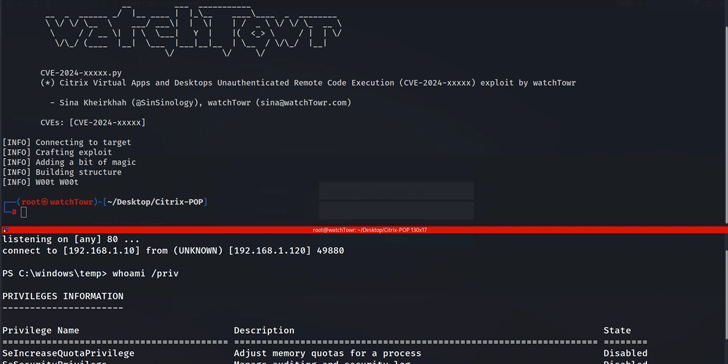Meta Fined €91 Million for Storing Millions of Passwords in Plaintext
In a significant blow to Meta’s data protection practices, the Irish Data Protection Commission (DPC) has imposed a hefty fine of €91 million ($101.56 million) on the tech giant. This penalty stems from a 2019 security lapse where millions of Facebook and Instagram user passwords were stored in plaintext format, potentially exposing them to unauthorized access. This incident not only highlights the ongoing challenges in data security faced by major tech companies but also underscores the stringent enforcement of the European Union’s General Data Protection Regulation (GDPR).
The fine serves as a stark reminder of the critical importance of robust cybersecurity measures and the severe consequences of failing to protect user data adequately. As we delve deeper into this incident, we’ll explore the technical details, the impact on users and the company, and the steps organizations can take to prevent similar breaches in the future.
Technical Details
While the official report does not mention a specific CVE (Common Vulnerabilities and Exposures) ID for this incident, we can break down the technical aspects of the vulnerability:
Vulnerability Type: Improper Password Storage (Plaintext Password Storage)
Affected Products: Facebook and Instagram platforms
Impact: Potential unauthorized access to user accounts
Affected Data: User passwords
Time Frame: Some passwords dated back to 2012, with the issue discovered in March 2019
Scale: Millions of Instagram passwords and a subset of Facebook passwords were affected
The core issue lies in the storage of user passwords in plaintext format. This practice is widely recognized as a significant security risk in the cybersecurity community. Passwords should always be stored using strong, one-way hashing algorithms with salting to protect them even if the database is compromised.
While no Indicators of Compromise (IoCs) or specific detection rules were provided in the report, organizations can implement monitoring for large-scale access to password databases or unexpected queries to user credential storage systems.
The Anatomy of Attack
The incident came to light in March 2019 when Meta (then Facebook) disclosed that it had inadvertently stored user passwords in plaintext within its internal data storage systems. This revelation prompted an immediate investigation by the Irish Data Protection Commission, given Meta’s European headquarters in Ireland.
The scope of the breach was initially unclear, but it soon became apparent that the issue was far-reaching. According to a report by Krebs on Security, some of the exposed passwords dated back to 2012. Even more concerning was the revelation that approximately 2,000 engineers or developers had made about nine million internal queries for data elements containing these plaintext passwords.
The impact of this security lapse is multifaceted:
- User Privacy and Security: While Meta claimed there was no evidence of internal abuse or improper access, the mere existence of plaintext passwords significantly increases the risk of unauthorized access. If a malicious actor had gained access to these internal systems, millions of user accounts could have been compromised.
- Trust and Reputation: This incident dealt a significant blow to Meta’s reputation as a custodian of user data. It raised questions about the company’s overall approach to data security and privacy practices.
- Regulatory Scrutiny: The breach led to increased scrutiny from data protection authorities, culminating in the €91 million fine from the Irish DPC. This penalty reflects violations of four different articles under the GDPR, including failure to promptly notify the DPC of the data breach and inadequate technical measures to ensure password confidentiality.
- Financial Impact: Beyond the immediate fine, Meta faces potential long-term financial repercussions from loss of user trust and the need to invest in improved security measures.
- Industry-wide Implications: This high-profile case serves as a wake-up call for other tech companies, emphasizing the need for stringent data protection measures and the severe consequences of non-compliance with data protection regulations.
The DPC’s deputy commissioner, Graham Doyle, emphasized the gravity of the situation, stating, “It is widely accepted that user passwords should not be stored in plaintext, considering the risks of abuse that arise from persons accessing such data.” He further noted that passwords are particularly sensitive as they enable access to users’ social media accounts.
Meta’s response to the incident included immediate action to address the issue and proactively flagging it to the DPC. However, the commission found fault with the timeliness of Meta’s notification and the adequacy of its documentation regarding the breach.
Remediation Steps
To prevent similar incidents and improve overall data security, organizations should consider the following remediation steps:
- Implement Proper Password Hashing: Use strong, industry-standard hashing algorithms (e.g., bcrypt, Argon2) with salting to store passwords. This ensures that even if the password database is compromised, the actual passwords remain protected.
- Regular Security Audits: Conduct comprehensive and regular security audits of all systems, particularly those handling sensitive user data. This can help identify potential vulnerabilities before they’re exploited.
- Access Control and Monitoring: Implement strict access controls to sensitive data and systems. Monitor and log all access attempts, particularly to systems containing user credentials.
- Employee Training: Provide regular, mandatory security training for all employees, especially those with access to sensitive systems. This should include best practices for handling user data and recognizing potential security risks.
- Incident Response Plan: Develop and regularly test a comprehensive incident response plan. This should include procedures for promptly notifying relevant authorities and affected users in case of a data breach.
- Data Minimization: Adopt a policy of data minimization. Only collect and retain user data that is absolutely necessary for the operation of the service.
- Encryption in Transit and at Rest: Ensure all sensitive data, including passwords, is encrypted both in transit and at rest. This provides an additional layer of protection against unauthorized access.
- Regular Penetration Testing: Conduct regular penetration testing and vulnerability assessments to identify potential weaknesses in your systems before they can be exploited by malicious actors.
By implementing these measures, organizations can significantly reduce the risk of similar data breaches and better protect their users’ sensitive information. The Meta incident serves as a crucial reminder of the importance of robust data protection practices in our increasingly digital world.



